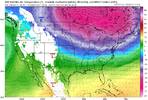Low point for Southernwx for sure.
-
Hello, please take a minute to check out our awesome content, contributed by the wonderful members of our community. We hope you'll add your own thoughts and opinions by making a free account!
You are using an out of date browser. It may not display this or other websites correctly.
You should upgrade or use an alternative browser.
You should upgrade or use an alternative browser.
Misc Winter Weather Support Group
- Thread starter RBR71
- Start date
Itryatgolf
Member
Not sure if I mentioned this, but if I was offered $500,000 to take a job in Florida or next offered $75,000 to take a job between St Louis and Memphis, no brainer I would go with second offer! At least I have a glimmer of hope for wintry weather there than Florida. It's tough as it is to see wintry weather here, much less there!!
kennedybb6
Member
Sorry you guys are having emotional difficulties perhaps a colonoscopy would make you feel better? This is the best sleep ever and you will not even care about the weather……..
Drizzle Snizzle
Member
Florida has had wintry weather this year unlike some places.Not sure if I mentioned this, but if I was offered $500,000 to take a job in Florida or next offered $75,000 to take a job between St Louis and Memphis, no brainer I would go with second offer! At least I have a glimmer of hope for wintry weather there than Florida. It's tough as it is to see wintry weather here, much less there!!
Snowflowxxl
Member
Meow
Are you literally saying you would forego giving your family a stress free life to instead live somewhere that climo dictates more snow?Not sure if I mentioned this, but if I was offered $500,000 to take a job in Florida or next offered $75,000 to take a job between St Louis and Memphis, no brainer I would go with second offer! At least I have a glimmer of hope for wintry weather there than Florida. It's tough as it is to see wintry weather here, much less there!!
Why not just travel with a tiny portion of the 500k?
What?
Itryatgolf
Member
It's just me so I can make that move. I like all my seasons where I currently resideAre you literally saying you would forego giving your family a stress free life to instead live somewhere that climo dictates more snow?
Why not just travel with a tiny portion of the 500k?
What?
NoSnowATL
Member
Divorce would be in your future.
Itryatgolf
Member
Not if you don't get married!!Divorce would be in your future.
I'd take the 500k. Screw snow. I'd work it about 5 years then I'd be able to live anywhere I wanted at that point.It's just me so I can make that move. I like all my seasons where I currently reside
NoSnowATL
Member
Not taking that 500k kinda guarantees that.Not if you don't get married!!
LickWx
Member
Gorgeous day, my condolences to all those who went subzero. Hope Home Depot has a sale on all your landscaping needs to replace your dead yards.
LickWx
Member
75k to live in a bumhole like Memphis or St. Louis … ooofNot taking that 500k kinda guarantees that.
LickWx
Member
Guys guess what…. Brick guess what! It snowed in Alabama Mississippi Tennessee and Florida ! Guess where it didn’t snow? The Carolina’s! Boom. Now grow some hair on your chest and get over it…. It’ll snow
Avalanche
Member
Agree.There’s been far worse in here lol it ain’t even that bad
LickWx
Member
Change your name from Avalanche to mudslide ! We get rain but no snowAgree.
Itryatgolf
Member
75k to live in a bumhole like Memphis or St. Louis … ooof
Between st louis and memphis! Money isn't everything.75k to live in a bumhole like Memphis or St. Louis … ooof
Avalanche
Member
Yes it will. Just have to drive to the top of Mt Mitchell, that’s all.Guys guess what…. Brick guess what! It snowed in Alabama Mississippi Tennessee and Florida ! Guess where it didn’t snow? The Carolina’s! Boom. Now grow some hair on your chest and get over it…. It’ll snow
Southern Track
Member
NBAcentel
Member
That’s a nice angle of cold entry. Not from the PNW
LickWx
Member
What happens when it does snow ? Do all the people who said it doesn’t snow anymore come out and admit they were wrong? Do they begin the same stick all over again next winter forgetting the previous?
Well guys I think I’m calling it in for the year. I know know some of you will say good riddance. That’s ok. It’s just not in the cards this year east of the mountains. See ya around oct-nov for some kind of hope for about a month.
LickWx
Member
Good riddance . See you later tonight during the next round of modelsWell guys I think I’m calling it in for the year. I know know some of you will say good riddance. That’s ok. It’s just not in the cards this year east of the mountains. See ya around oct-nov for some kind of hope for about a month.
Southern Track
Member
It about phased two pieces right along that boundary.That’s a nice angle of cold entry. Not from the PNW
You aren't going anywhere. You have another 2 months of failure left to witnessWell guys I think I’m calling it in for the year. I know know some of you will say good riddance. That’s ok. It’s just not in the cards this year east of the mountains. See ya around oct-nov for some kind of hope for about a month.
- Joined
- Jan 23, 2021
- Messages
- 4,069
- Reaction score
- 12,835
- Location
- Lebanon Township, Durham County NC
It really was beautiful today. I even saw some slush on some roads(yes it was turf runoff but it counts).Gorgeous day, my condolences to all those who went subzero. Hope Home Depot has a sale on all your landscaping needs to replace your dead yards.
- Joined
- Jan 23, 2021
- Messages
- 4,069
- Reaction score
- 12,835
- Location
- Lebanon Township, Durham County NC
Dude it’s been the same for the two decades I’ve been here. It’s Widremann but with less logic.What happens when it does snow ? Do all the people who said it doesn’t snow anymore come out and admit they were wrong? Do they begin the same stick all over again next winter forgetting the previous?
It doesn't snowWhat happens when it does snow ? Do all the people who said it doesn’t snow anymore come out and admit they were wrong? Do they begin the same stick all over again next winter forgetting the previous?
Bonus points for a Widreman referenceDude it’s been the same for the two decades I’ve been here. It’s Widremann but with less logic.
LickWx
Member
I’ve only been on earth for a little over 2 decades. Old man.Dude it’s been the same for the two decades I’ve been here. It’s Widremann but with less logic.
Yeah, but you could own a second home anywhere with that income, and fly first class twice a month. 500 all day for me.Not sure if I mentioned this, but if I was offered $500,000 to take a job in Florida or next offered $75,000 to take a job between St Louis and Memphis, no brainer I would go with second offer! At least I have a glimmer of hope for wintry weather there than Florida. It's tough as it is to see wintry weather here, much less there!!
- Joined
- Jan 23, 2021
- Messages
- 4,069
- Reaction score
- 12,835
- Location
- Lebanon Township, Durham County NC
Let me tell you about the blizzard of 1993 sonnyI’ve only been on earth for a little over 2 decades. Old man.
- Joined
- Jan 23, 2021
- Messages
- 4,069
- Reaction score
- 12,835
- Location
- Lebanon Township, Durham County NC
That’s how you know I’m an old head.Bonus points for a Widreman reference
Joel is a friend, though. We once carpooled in the mid 2000s to the first eastern conference from Durham to DC.
That's awesome. He would have a field day at this placeThat’s how you know I’m an old head.
Joel is a friend, though. We once carpooled in the mid 2000s to the first eastern conference from Durham to DC.
LickWx
Member
Nerd! Bring this widerman backThat’s how you know I’m an old head.
Joel is a friend, though. We once carpooled in the mid 2000s to the first eastern conference from Durham to DC.
- Joined
- Jan 23, 2021
- Messages
- 4,069
- Reaction score
- 12,835
- Location
- Lebanon Township, Durham County NC
I’ll shoot him a FB message and see if he’s interested. I mean I do communicate like a boomer I guess
I was talking to my civics teacher a few years ago about American because he posted on there. He went on a rant and told our class about how much Widerman bugged him, so not everyone may have liked him.Nerd! Bring this widerman back
LickWx
Member
Lol your teacher is a weenie, invite him here so we can bully him!I was talking to my civics teacher a few years ago about American because he posted on there. He went on a rant and told our class about how much Widerman bugged him, so that's all I know about him.
GoDuke
Member
Don’t mean to bring all this back up but I read back on it and Brick was literally minding his own business sharing his thoughts when cold rain decided to jump his ---. Just saying.I get Brick Timberland’s point. It’s frustrating to realize it’s been 2018 since our last big dawg


